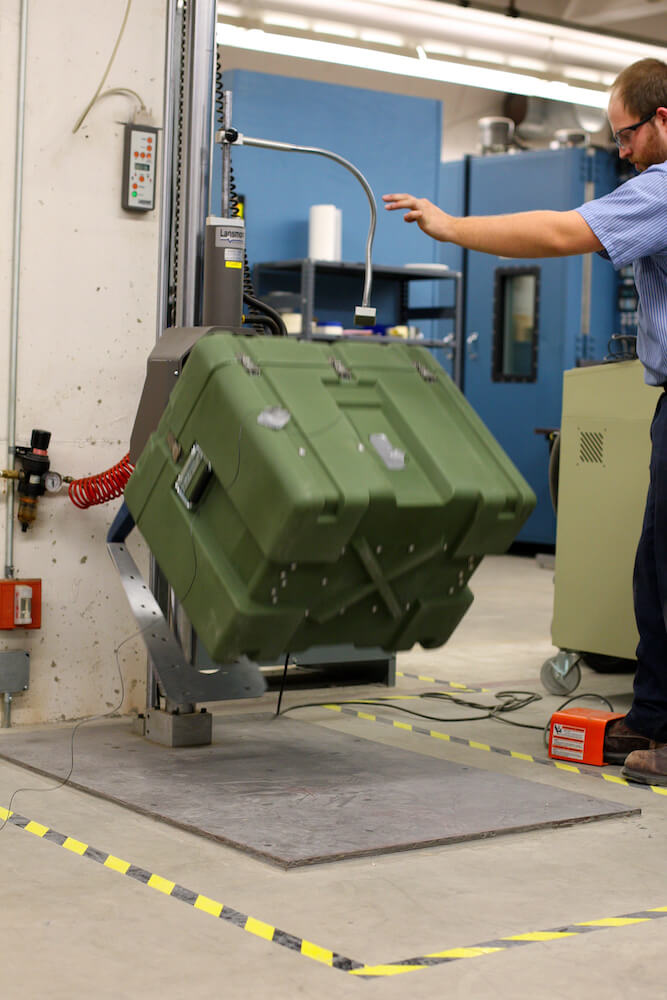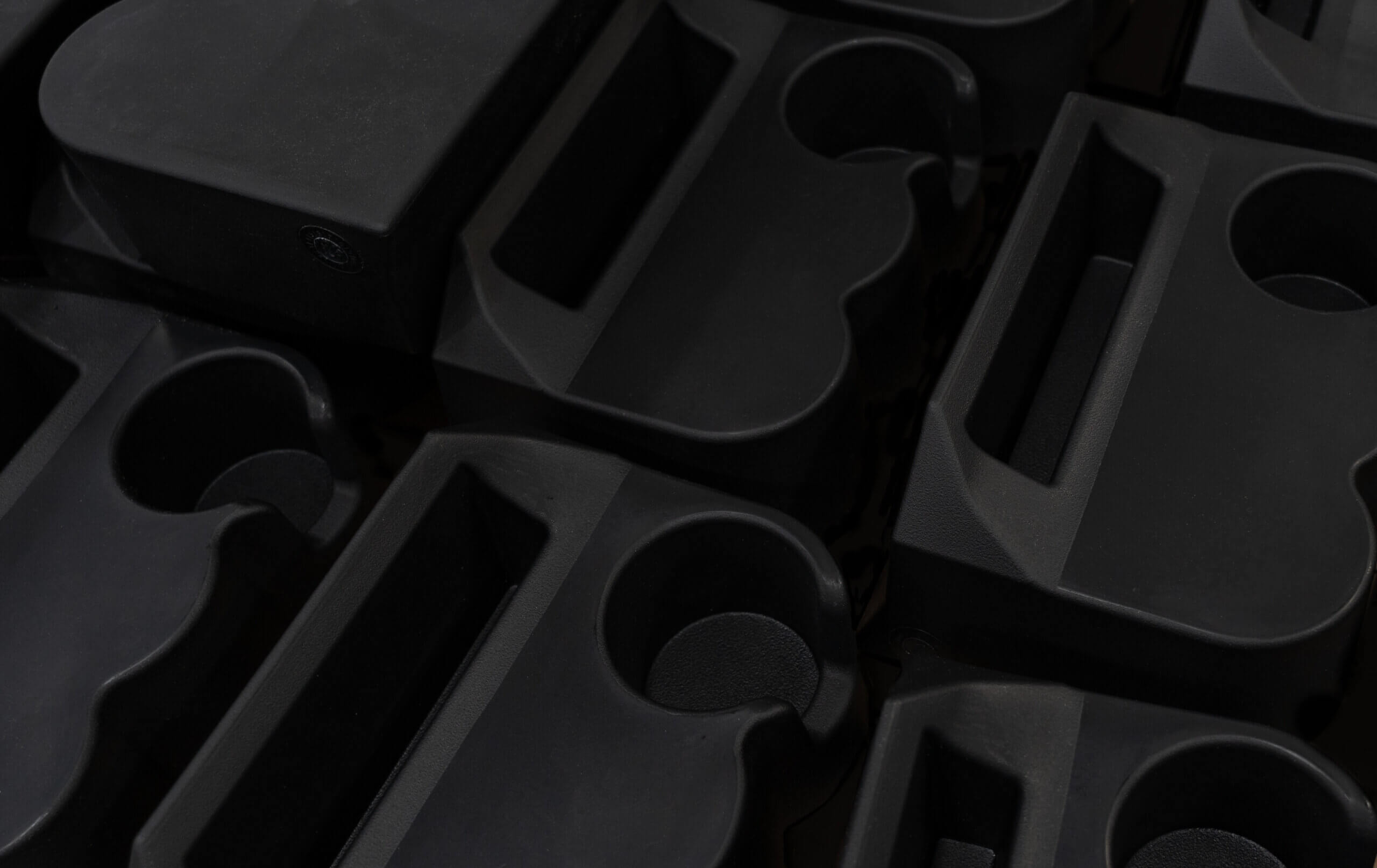
Why OEMs Are Rethinking Metal in Favor of Plastic
Metal has long been the preferred choice for OEMs who want strong, durable parts—but times are changing. Advances in polymer science and manufacturing have made engineered plastics a viable and often superior alternative in many applications. In fact, plastic parts are reshaping how OEMs think about performance and efficiency. In this article, we’ll identify why manufacturers are making the switch to plastic and share important considerations if you’re thinking about doing the same.
The Benefits of Plastic Parts for OEMs
-
- Plastic parts can provide weight savings compared to metal. From hand tools and medical devices to agricultural equipment, construction machinery, and utility vehicles, plastic components can be designed lighter than metal, depending on their thickness and size. These lighter plastic components make equipment easier and more efficient to operate while reducing the mechanical strain on motors. Their use in heavy machinery, material handling, and aerospace applications can also support better performance, fuel efficiency, and operator comfort.
- Plastic parts allow for design and material flexibility. If you need a part with a complex shape, you’ll appreciate the versatility of thermoformed or rotomolded plastic. Unlike metal, which only offers OEMs a few options with set properties, plastic provides a broad spectrum of materials that can be precisely engineered to meet your unique needs. Ultimately, plastic allows design engineers to optimize the form and function of your part, enabling you to create a superior end product.
- Plastic can offer greater impact resistance. Unlike metal, which can permanently dent with impact, plastic offers excellent impact strength, allowing it to endure heavy use and sudden force without cracking or breaking. This resilience makes plastic an excellent choice for agricultural and construction equipment and a go-to in other rugged environments.
- Plastic parts are corrosion and chemical-resistant. Plastic parts require less maintenance and don’t need special coatings to prevent rust and corrosion. This makes them an ideal choice for outdoor environments or with aggressive chemical exposure.
- Plastic parts are cheaper to replace. While raw material costs can vary, plastic parts are usually more economical to produce and procure than metal parts due to streamlined fabrication processes. Most plastic parts require less machining and can be created in fewer steps. Additionally, lower cycle times and the ability to produce high volumes translate into lower cost-per-unit. These aspects of plastic contribute to more affordable replacement costs.
Thinking About Making the Switch? Here Are a Few Tips to Help You Get Started:
1. Know your manufacturing options.
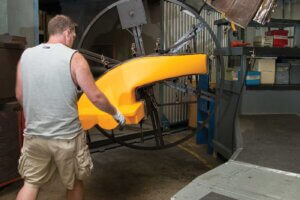
Rotational molding is ideal for:
-
-
-
- high-impact performance
- applications that require unique geometries
- hollow parts like fuel tanks, bumpers, fenders, dashboards, and housings
-
-
Thermoforming is a manufacturing process that involves heating a thermoplastic sheet until it becomes flexible, then shaping it over a mold using vacuum or mechanical pressure. It’s commonly used to produce everything from packaging and containers to sturdy components for vehicles and electronic devices.
Thermoforming is ideal for:
-
-
-
- applications with depth and/or dimension
- applications that require design flexibility or involve complex shapes
- applications that demand material versatility
- covers or housings, such as dash covers, bumpers, wheel wells, and machine guards
-
-
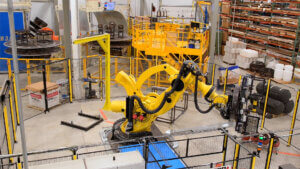
Robotic rotational molding, or Robomolding®, is a process where a robot tumbles the electrically heated mold. It incorporates a multitude of separate heating zones. Direct heat applied to these zones enables plastic resin to reach its ideal processing temperature and permits manufacturers to create geometries that were previously unattainable. Robomold’s precision-distributed heat and material control also results in tighter tolerance control and optimized strength-to-weight ratios.
Robomolding is ideal for:
-
-
-
- applications that require unique geometries
- applications with multi-layer designs
- military, aerospace, and OEM applications
-
-
By leveraging zoned heating and precise control over geometry, Robomolding achieves unmatched part quality.
2. If thermoforming, account for draft and radius in your design.
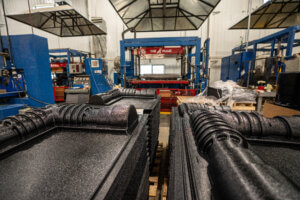
When accounting for radius, the larger the radius the better. This allows for a smoother transition from top surfaces to the sidewalls.
3. Don’t go at it alone—consult with a design engineer!
At Gemstar, we don’t just fabricate your parts—we want a partnership. Each client works directly with our team of design engineers to develop precise parts and ensure a smooth, efficient process from concept to completion.
We perform traditional rotational molding, Robomolding®, as well as thermoforming. Each method has its unique benefits and use cases. All our plastic products are made in the USA at our Cannon Falls, MN location, where we recently doubled our square footage to allow for more capacity and keep up with demand.
Schedule a free consultation with one of our design experts to discuss your next project!

